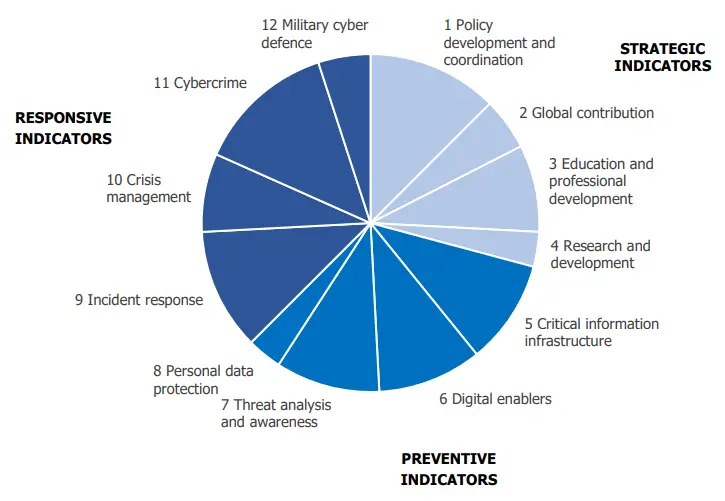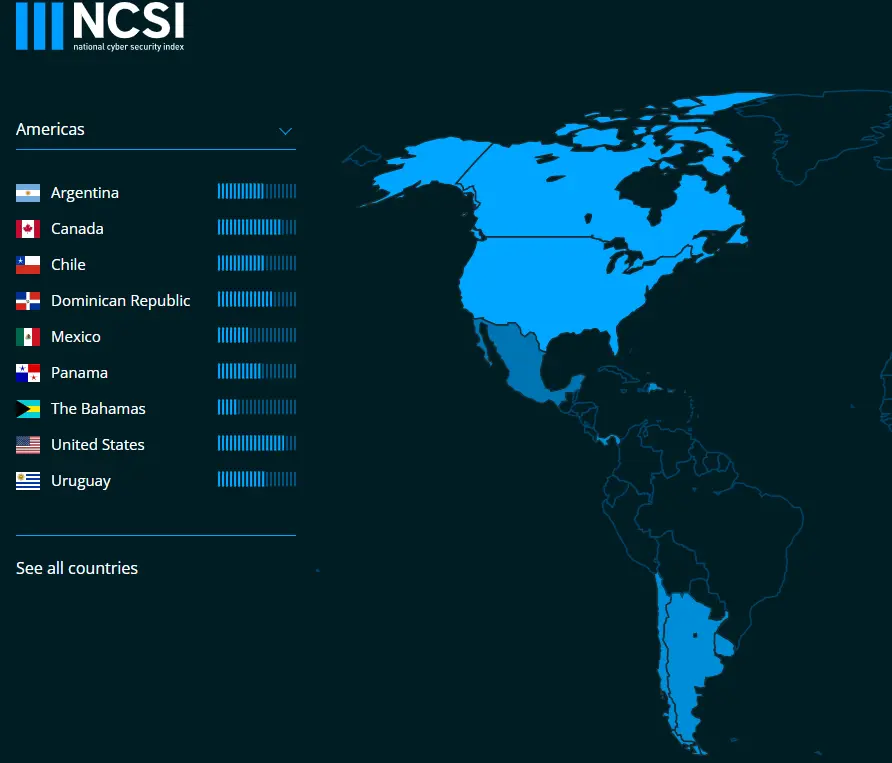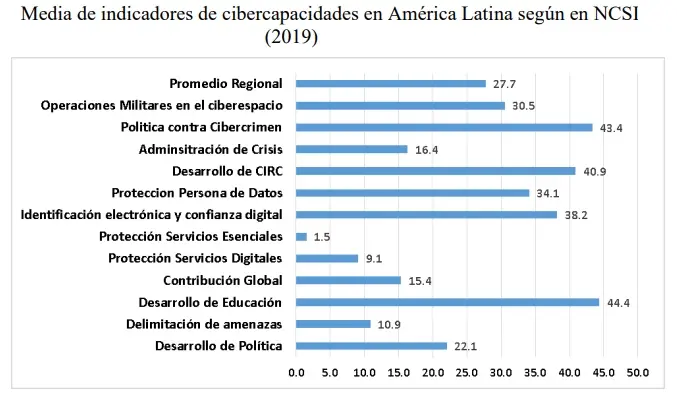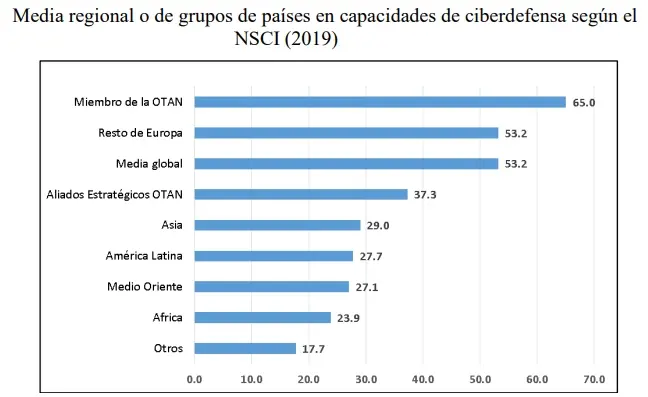
National Cybersecurity Index: Where is Latin America?
What is (NCSI)?
The National Cybersecurity Index (NCSI) is a global, real-time index maintained by Estonia that measures countries’ readiness to prevent threats and manage incidents. The NCSI also serves as a publicly available evidence database and a tool for national cybersecurity capacity development.
Comprehensive Cybersecurity Measurement Tool
This National Cybersecurity Index (NCSI) aims to develop a comprehensive measurement tool for cybersecurity, providing accurate and up-to-date public information about the cybersecurity of multiple countries. In the coming years, different applications will be developed for analyzing and developing cybersecurity further.
Strategic, Preventive, and Reactive Capacity
To manage these cyber threats, a country must have appropriate capabilities for strategic, preventive, and reactive cybersecurity.
(IMAGEN RUEDA COLORES)

NCSI 3.0: Maturity Indicators and New Approaches
NCSI 3.0 includes maturity indicators, taking into account technological advances, the evolving risk environment, and the maturation of countries’ cybersecurity practices. It introduces new indicators for political leadership, commitment to international law in cyberspace, and cybersecurity research and development (strategic pillar); cloud services cybersecurity, supply chain security, and cybersecurity awareness coordination (preventive pillar); and tools for reporting cyber incidents, participation in international cooperation for incident response, procedural law, and military cyber doctrine (responsive pillar). These indicators have been developed in line with the national cybersecurity framework.

Latin America in the National Cybersecurity Index
In this region, the highest-ranked countries are Chile (25), Uruguay (27), and Argentina (31). In Chile’s case, in 2020, it was ranked 56th, and after the approval of the Cybersecurity Framework Law in 2023, it climbed 30 spots, positioning itself among the countries with the most robust cybersecurity institutions.
Chile: A Success Story
Chile’s National Cybersecurity Coordinator, Daniel Álvarez Valenzuela, stated that “although cyberattacks are becoming increasingly sophisticated and impactful, the National Cybersecurity Index (NCSI) results show that Chile is more prepared than ever to face cyber threats, both legislatively and in incident response.”

Global Comparison: Latin America vs. Other Regions
When analyzing the data from the past few years, NATO countries lead in building cybersecurity defense capabilities, with an average score close to 65 out of 100. Latin America ranks at the bottom in regional comparisons, below the global average, with a score of 25.5 points (27.7).
Key Areas and Challenges for Latin America
The two dimensions where the region is best positioned in the National Cybersecurity Index (NCSI) are cybercrime policy development (43.4 points) and education development (44.4 points). However, the region has not clearly defined which types of cyber threats can affect its national security (10.9 out of 100 points), and military capabilities to address cyber threats are still under development (30.5 points).
Here you can view the live report


The National Cybersecurity Index (NCSI) is developed in 5 steps:
- Identifying national cyber threats
- Identifying cybersecurity measures and capacities
- Selecting important and measurable aspects
- Developing cybersecurity indicators
- Grouping cybersecurity indicators
The National Cybersecurity Index (NCSI) focuses on measurable aspects of cybersecurity implemented by central governments:
- Current legislation: legal acts, regulations, orders, etc.
- Established units: existing organizations, departments, etc.
- Cooperation formats: committees, working groups, etc.
- Outcomes: policies, exercises, technologies, websites, programs, etc.
Values are assigned by the expert group based on the following considerations:
- 2 points: a legal act regulating a specific area
- 2-3 points: a specialized unitç
- 2-3 points: an official cooperation format
- 1-3 points: an outcome/product
Country scores in NCSI are based on public evidence:
- Legal acts
- Official documents
- Official websites NCSI Scores
- The National Cybersecurity Index (NCSI) score reflects the percentage a country received from the maximum value of the indicators. The maximum NCSI score is always 100 (100%), regardless of whether indicators are added or removed.
Data Management in the National Cybersecurity Index (NCSI) Several forms of data collection are used:
- Government officials from the country provide the data
- An organization or individual provides the data
- The National Cybersecurity Index (NCSI) team collects public data, and after collection, the information is reviewed by at least two National Cybersecurity Index (NCSI) experts. After inspection, the dataset is published on the National Cybersecurity Index (NCSI) website.
The collection, review, and publication of data is an ongoing process. No annual iterations are published. When new evidence is provided, it is evaluated, and if justified, necessary changes to the ranking are made immediately.
